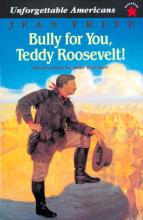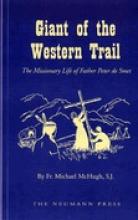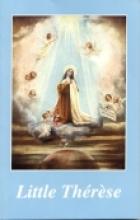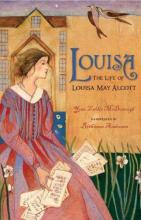19th century Biographies
Bully for You, Teddy Roosevelt
This is an interesting biography of one of our nation's most colorful presidents. It was interesting to discover that Teddy Roosevelt (1858-1919) was a rather sickly youth who suffered from asthma. His determination in overcoming his illness and living a full life despite his rather frail body help to make him a man who loved life and tried to live his life to the fullest – especially enjoying the world around him. He was a nature enthusiast and an avid hunter and is considered one of the pioneers of the conservation movement – although certainly not what some today might call a "wacko environmentalist." This aspect of the story might lead to some interesting discussions with your children about a proper stewardship of nature. It is interesting to note how he was affected by the harsh winter of 1886-1887 which devastated the Dakotas where Roosevelt had a huge ranch. I believe this was the same year described in the book The Long Winter by Laura Ingalls Wilder. A comparison of the two perspectives might make an interesting writing assignment. I can't comment on the accuracy of the author's presentation of the politics of the day – especially the war in Cuba – as I haven't read much else about it. This book would provide interesting reading and discussion material for approximately grades 5-8.
Charles and Emma
While the book could be read by a younger audience, the book contains too many narrow and misleading religious statements to be read by a child without the ability to see through these serious faults. It does give a deeper perspective regarding religion in 19th century England and the faith of Charles and Emma Darwin, though unfortunately through an anti-religious filter.
From Slave to Priest
Giant of the Western Trail
Pierre-Jean De Smet (1801-1873) was a beloved missionary in the American West who brought the Gospels and the Catholic Faith to many Indians as well as fighting for peace and justice for the Indians and those suffering from the Civil War. A substantial figure in American history, many may remember from the Little House Books that the city in South Dakota that the Ingalls settled in was named after this renowned priest.
This is a readable interesting story which provides many interesting details about Indian life, the cause of the struggles with the Indians, and the role of Catholics in American history. It really shows a much more favorable side to the Indians than we see in many books as we understand their initial trust of white man and how that trust was betrayed over and over again. (Naturally the details vary from tribe to tribe.) Fr. de Smet founded missions among many of the Indian tribes and played influential roles in a number of important peace councils – particularly his encounters with the legendary Sitting Bull.
One reason I think this book is particularly important is that it shows how progressive Catholic teaching is and was on matters relating to the Indians and their rights. Kind of interesting from a book written in the 1950s! Highly recommended. Most appropriate for grades 5-8.
A great book to read alongside this is Brave Buffalo Fighter by John D. Fitzgerald (Bethlehem Books). It brings the same era to life through the eyes of children on a wagon train.
God's Little Flower, the Story of St. Therese of Lisieux
God's Little Flower is not so much a biography but an age-appropriate explanation of St. Therese's spirituality. There are no dates or quotations or geography lessons slipped into the text, yet it manages to convey an even more important lesson---that of quiet, loving service to God through our prayers and sufferings.
Little Therese
Louisa
I love picture books and I love biographies... and I love it when both are combined successfully! This warmly illustrated picture book tells of the most beloved American author Louisa May Alcott. Her family was definitely sui generis, holding unusual beliefs and moving often, and Louisa began thinking and writing poetry at a very young age.
This picture book sheds light on what a noble soul Louisa had, filled of generosity, integrity and character. Highly recommended especially for young readers who love the wonderful Little Women author.








